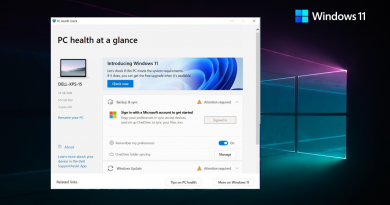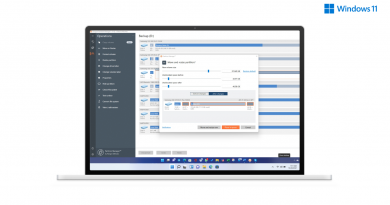Windows 11 in Gaming – A Closer Look at Auto HDR and DirectStorage
Windows 11 promises to offer a superior experience for all PC users by not only enhancing the tools that we use for work on a daily basis but also streamlining features and adding new elements for those who use their computers for matters beyond just work. This is because, in the past few years, our computers and mobile devices have been turning into an increasingly vital part of our daily lives, being used in all sorts of contexts, from a wide range of businesses and workplaces; for shopping, paying bills, and running errands online, to relaxing at home while watching a movie or gaming.
The truth of the matter is, computers are more present in our daily lives than ever, and Microsoft is developing Windows 11 with this in mind. In this sense, the new OS will be as effective for gaming and unwinding, as well as general use, then it is for working and other related tasks. And when it comes to gaming, specifically, Windows 11 is bringing a few notable additions, all designed to give gamers a much better experience when it comes to enjoying their favorite PC titles.
In this article, we’re going to take a closer look at Auto HDR, and DirectStorage, two of the most notable additions that Windows 11 is bringing to the gaming scene.
Achieve Greater Image Quality with Auto HDR
Those who have been gaming on PC and on current and next-gen consoles might already be familiar with HDR; it’s a technology that enables a wider range of colors and allows for better and more vibrant images, but only in a select few games. This technology lets developers create visually stunning worlds, but with higher development efforts since they need to manually implement HDR into their games.
Auto HDR, on the other hand, is designed to bring all the benefits and improvements of HDR, to a much wider library of games, without any kind of additional effort required on the developer’s end. This improvement will be implemented retroactively to a large number of games that run using DirectX 11 and 12, elevating the number of titles that can make use of this technology by over a thousand.
The best part of Auto HDR is, as we mentioned above, that developers won’t have to commit to additional development time and costs to implement the technology in their games, since Auto HDR does it automatically and seamlessly. All the user needs to start enjoying this feature in applicable games is an HDR-compatible monitor, and then they can simply run the game and enjoy the eye candy. However, if necessary, the user can navigate to the Windows HD Color Settings page to enable or disable this feature.
Enjoy the Fastest Loading Times with DirectStorage
While graphics, and the enjoyment from improved visuals, are quite subjective, loading times are not. Some users might not care about HDR and how it can help to create enhanced images and visuals in their games, and that’s fine—some of our favorite titles are probably too old to even use HDR, anyway.
However, what all gamers can probably agree upon are that waiting sucks. No one likes to sit around blankly staring at loading screens while the PC works in the background to process and render the next scene, stage, or map in our games. After all, that’s the reason why the most committed PC gamers often invest in SSDs or other forms of high-speed storage, to shorten the amount of waiting required for the computer to load everything.
From reducing Windows boot times to less than 10 seconds, to significantly speeding uploading screens in games and apps, these forms of storage have, since the past several years, become a staple in any gaming or dedicated work PC. However, the new Windows 11 is taking the benefits of high-speed storage even further with its DirectStorage technology.
DirectStorage is a new addition coming with Windows 11, which is meant to utilize the superior speeds of NVMe SSDs, as well as the increased throughput of the PCI 3.0 ports, to offload a great part of the I/O calls for graphical assets directly to the GPU. In other words, this means that those with compatible hardware will experience much shorter loading times in games, and possibly even better performance overall, while dramatically reducing CPU load as this component won’t have to singlehandedly manage all the calls anymore.
Just like with Auto HDR and HDR monitors, the requirements for using DirectStorage are somewhat demanding, though you might already fulfill most, if not all, of them if you’re a dedicated PC gamer.
First and foremost, users who wish to enable this technology need high-capacity storage and high-velocity storage unit, which reportedly translates to an NVMe SSD with at least 1TB of capacity, and that can use the “Standard NVM Express Controller” driver. Furthermore, users will also need a GPU compatible with DirectX 12 Ultimate spec, such as the ones from the RTX 2000 and 3000 series. If your PC meets these hardware requirements, all it takes to enable DirectStorage is… nothing; the setting is activated by default as a standard Windows 11 feature.
It’s worth mentioning that DirectStorage is already featured in the Xbox Series X/S consoles, so it’s not entirely untested technology. Because of this, gamers can expect to enjoy significantly shorter load times and better performances in games that are developed with this technology. On the other hand, those who decide to upgrade to Windows 11, but don’t meet the hardware requirements for DirectStorage, will simply be able to play like they normally would, but without this benefit.
What do you think of these two new features arriving to Windows 11 on its release date? Leave us your thoughts in the comments below!




